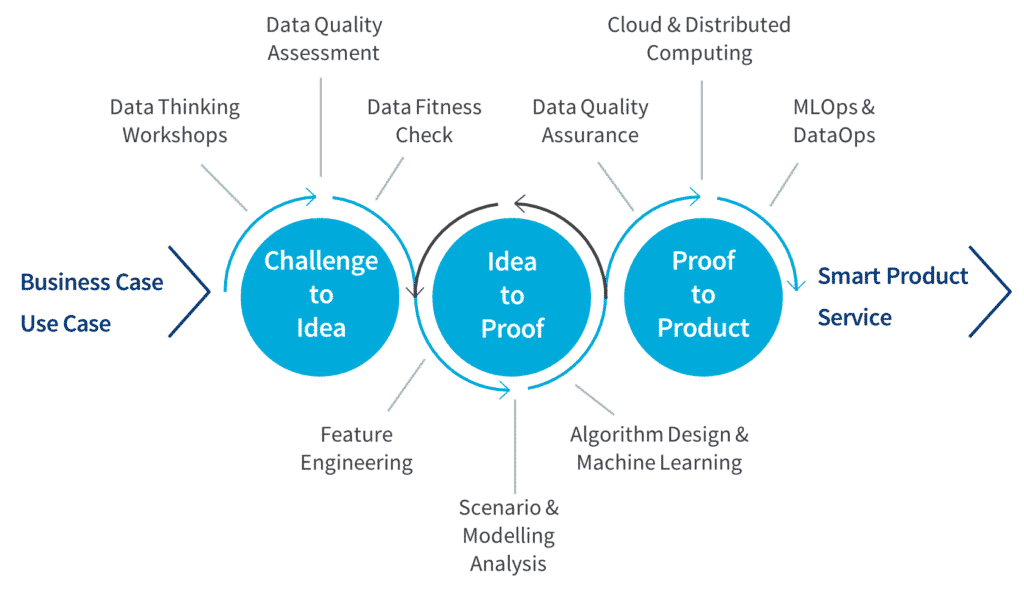24/7 Operation: Bridging MLOps, DataOps, and DevOps
Creating an ML-powered software product that operates round-the-clock poses significant challenges for organisations. Such products must not only adhere to DevOps principles like continuous integration and deployment (CI/CD) but also consider MLOps and DataOps. MLOps extends DevOps by incorporating aspects like version control of trained ML algorithms and the data features relevant to those algorithms. DataOps focuses on the data itself, including its origin, processing steps, and timestamp.
To ensure seamless MLOps and DataOps processes, robust data pipelines and orchestrated data flows are essential. These pipelines transform raw data into a master table that serves as input for the ML algorithm. Additionally, monitoring tools play a vital role in tracking the performance of the pipelines, as the accuracy of ML predictions heavily relies on data quality. Automatic alerts are triggered when predefined metrics, such as prediction accuracy, fall below acceptable thresholds.
User-centric design: Putting users at the centre
Ultimately, the success of a product hinges on user satisfaction. Therefore, prioritising the user experience and considering UX aspects from the early stages of project development is crucial. The design of interactions and visual aesthetics plays a significant role in creating an appealing, easily understandable, and user-friendly application.
At GeoML, we encountered the challenge of catering to a heterogeneous target audience (social media users) and aligning our design and objectives with their preferences. When dealing with abstract topics and a less-informed target audience, user-friendly design becomes even more critical in capturing users’ interest despite initial unfamiliarity. We gathered as much information as possible about our target audience, creating generalised user profiles to guide our design decisions.
Measuring user engagement: An ongoing journey
Determining the level of user engagement with a product is crucial for its success. For GeoML, we will rely on future measurements to answer questions such as the frequency of completing and repeating the challenge, sharing the challenge with others, and the duration of engagement with specific views (estimation questions). These measurements will provide valuable feedback and insights. As discussed in the second article, internal user testing helped us approach the ideal form of our product.
Conclusion
The journey from idea to product is not a linear process but rather an agile and continuous loop. It requires ongoing evaluation, re-evaluation, and adaptation. At ERNI, we embrace this iterative flow, ensuring that each step aligns with the evolving requirements. By bridging MLOps, DataOps, and DevOps, and prioritising user-centric design, we can overcome challenges and deliver ML-based applications that meet the needs and expectations of users.

Explore our interactive ML-based web application at: https://geoml.erni

